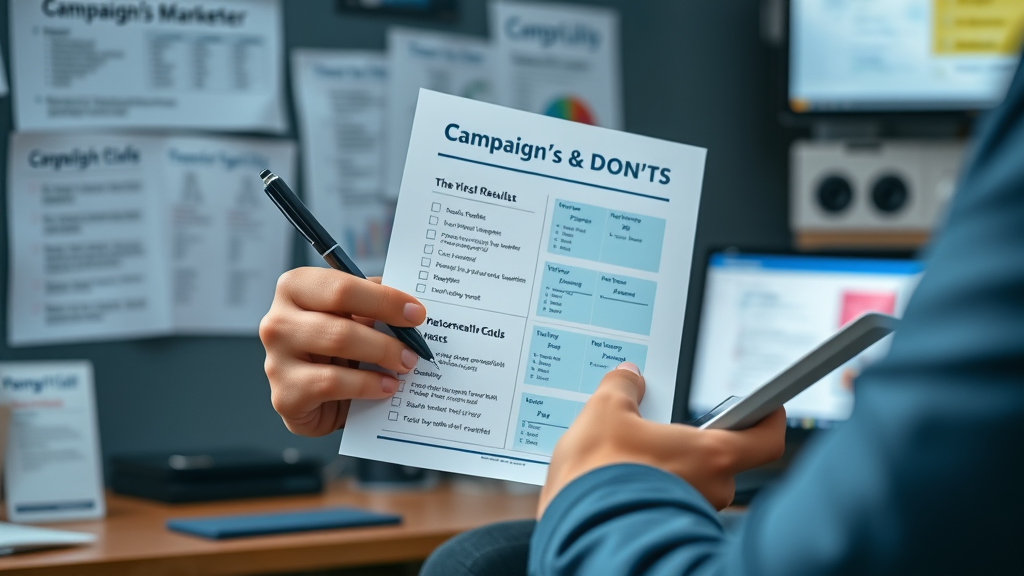Did you know that businesses using lead nurturing automation generate 50% more sales-ready leads at 33% lower cost? The art of turning prospects into loyal buyers used to take months of manual outreach—now, smart automation can accelerate your sales cycle and improve conversion rates dramatically. In this in-depth guide, you’ll unlock the strategies top marketing teams use to move leads efficiently through your sales funnel, automate meaningful touchpoints, and convert more customers . Whether you're new to nurturing campaigns or ready to optimize with advanced marketing automation, read on for everything you need to know about transforming your prospect engagement—and your business growth.

Why Lead Nurturing Automation is a Game Changer: Startling Statistics & Facts
- You will discover how to leverage lead nurturing automation to move prospects efficiently through your sales funnel, design data-driven nurturing campaigns, and automate key steps for faster conversions.
Lead nurturing automation has revolutionized how businesses approach lead gen and customer engagement. According to recent studies, companies using marketing automation in their nurturing campaigns see a 451% increase in qualified leads. The impact is especially pronounced for businesses with complex sales cycles, where timely, relevant content makes the difference between a lost opportunity and a closed deal.
The average sales rep spends only 36% of their time selling; the rest goes to lead management and manual follow-ups. With automation, your marketing team can schedule targeted communications, personalize outreach, and track every interaction, freeing your sales reps to focus on closing deals. Automated nurturing also enhances your ability to segment leads based on buyer personas and behaviors, delivering the right message at every stage of the nurturing process. Open rates for automated email marketing campaigns are consistently higher, and the result is a shorter sales cycle, improved conversion rate, and a more predictable sales funnel.
Defining Lead Nurturing Automation: Core Principles and Goals
What is Lead Nurturing Automation? The Essential Overview

Lead nurturing automation refers to using software platforms to streamline, manage, and optimize the process of engaging, educating, and converting prospects over time. Instead of relying solely on manual touchpoints from sales reps, companies use automation tools to deliver personalized content, score leads, and trigger targeted follow-ups based on actions like email opens or website visits.
The primary goal is to provide value at every step in the buyer’s journey, helping nurture leads and guide them naturally through your sales funnel. As a result, prospects receive the right information based on their pain points and interests, increasing the odds they’ll become sales-ready. By integrating marketing automation with CRM systems, organizations gain better insights into their nurturing efforts, measure ongoing performance, and can align both marketing and sales strategies for greater ROI.
The Difference Between Manual and Automated Lead Nurturing
Manual lead nurturing typically involves sales reps or marketers sending one-off emails, making phone calls, or manually tracking lead engagement—a labor-intensive approach vulnerable to inconsistencies. Automated lead nurturing, by contrast, uses workflows, triggers, and segmentation within a marketing automation platform. This not only speeds up follow-ups but ensures every lead receives consistent, relevant content.
Automated nurturing campaigns provide scalability, allowing you to maintain a personal touch with hundreds or even thousands of prospects simultaneously. Instead of remembering every prospect’s stage in the sales cycle, automation handles the heavy lifting. Metrics, such as lead scoring, conversion rate, and content engagement, help continually optimize your nurturing strategy and make data-driven decisions.
Understanding the Role of Marketing Automation in Lead Nurturing
Marketing automation is the engine powering modern lead nurturing efforts. It brings together email marketing, social media management, lead scoring, campaign analytics, and CRM integration—all in one ecosystem. By orchestrating multiple nurturing campaigns seamlessly, your marketing team gains invaluable touchpoints to influence buying decisions and reduce sales friction.
Email marketing drips, retargeting ads, and even SMS message triggers work together to keep your solution top-of-mind for potential buyers. Over time, automation helps identify which qualified lead moves through the sales cycle fastest and which pain points stall conversions. This insight enables continuous improvement of your nurturing strategy for even better results.
| Factor | Manual | Automated |
|---|---|---|
| Responsiveness | Slow, depends on sales rep availability | Instant, triggered in real time |
| Scale | Limited by manpower | Unlimited, as large as your database |
| Personalization | Variable, hard to maintain consistently | Consistent, data-driven personalization |
| Results | Unpredictable, labor-intensive | Measurable, increases conversion rates |
Lead Nurturing Strategies: Building Your Foundation
Key Elements of an Effective Lead Nurturing Strategy

Every successful lead nurturing strategy begins with a clear understanding of your audience and business goals. The foundation involves nurturing efforts such as segmenting leads into meaningful personas, defining the content required at each stage, and mapping the customer journey. Central to this process is providing ongoing value to nurture leads and help them overcome pain points—whether through educational blog posts, expert webinars, or tailored product demos.
To maximize the impact of your nurturing campaigns, coordinate touchpoints across multiple channels, including email marketing, social media, and retargeting. Utilize lead scoring to prioritize follow-ups, and always analyze your nurture leads’ engagement with each piece of relevant content. A data-driven approach ensures your marketing and sales team maintains alignment and every nurturing campaign is optimized for results.
Mapping Your Buyer Persona for Lead Nurturing Campaign Success
A detailed buyer persona is the backbone of any high-performing nurturing campaign. Start by gathering data from existing customers and mapping key pain points, industry roles, buying behaviors, and preferred communication channels. With these insights, your nurturing strategy becomes laser-focused—not only addressing the prospect’s current challenges but anticipating future objections.
Aligning your lead nurturing automation efforts to specific buyer personas ensures each lead receives the most relevant content, delivered in the format and frequency they prefer. This not only boosts engagement but increases the likelihood of moving nurture leads through the sales funnel quickly and efficiently, creating more opportunities for your sales reps to close.
How Nurture Leads Move Through Your Sales Cycle
A core goal of lead nurturing is to accelerate the movement of prospects through the sales cycle . Typically, leads start at the awareness stage where they interact with educational content. As they engage and their lead score improves, automation platforms trigger more targeted messages—such as case studies or comparison guides—guiding them through interest, consideration, and decision.
When leads reach the point of being sales-ready, their behavioral data signals your sales team to engage directly, armed with insights on their interests and pain points. With automated nurturing, these transitions are tracked and optimized in real time, creating a seamless experience that increases both the quantity and quality of conversions.
"Lead nurturing automation bridges the gap between interest and purchase by delivering the right content at the right time."
Nurturing Campaigns and Automation Tools: What Marketers Need to Know
Choosing the Best Marketing Automation Platforms for Your Lead Nurturing Programs

Selecting the right marketing automation platform can be the difference between scattered nurturing efforts and streamlined success. Look for platforms that offer robust lead scoring, segmentation, email marketing, and CRM integration. Popular solutions like HubSpot, Marketo, ActiveCampaign, or Pardot provide customizable workflows, powerful reporting, and flexible integrations that empower your marketing team to create sophisticated nurturing campaigns.
When evaluating automation tools, consider scalability, ease of use, and the capacity to coordinate across channels (such as email marketing and social media). Also, assess each tool’s ability to map the buyer persona and personalize content, ensuring your nurture leads are always engaged with the most relevant content and timely follow-ups.
Automation Features: From Email Marketing to Social Media Touchpoints
A modern automation platform does more than just schedule emails. It orchestrates multi-touch nurturing campaigns leveraging email marketing, social media posting, lead scoring, SMS, and even direct mail triggers. Dynamic segmentation ensures your content adapts to how each lead engages with your brand—so a prospect who clicks on a webinar invite may receive a specific follow-up, while another browsing your pricing page gets a tailored case study.
Social media touchpoints add another layer to your nurturing efforts. Scheduled posts, retargeting ads, and even chatbot messages help keep your audience engaged, guiding them from awareness to decision—all tracked and optimized within the same automation platform for full campaign visibility.
To fully grasp the capabilities of today’s top automation tools, consider watching platform demo videos. These demos illustrate workflow design, reporting dashboards, lead scoring in action, and practical tips for building effective nurturing campaigns. Many platforms offer short, step-by-step walk-throughs for new users, ensuring your marketing and sales team can launch and refine sophisticated automation with confidence.
Seeing real-time automation—for example, how an engaged lead triggers specific email drips or earns a higher lead score—can help you understand how to replicate these techniques in your own nurturing strategy for faster, more predictable results.
Designing High-Converting Lead Nurturing Campaigns
Steps to Build a Lead Nurturing Campaign That Converts
- Segmenting Leads: Divide your database by buyer persona, behavior, or lead stage to tailor your messaging.
- Personalizing Content: Use insights from lead gen and sales cycle data to create content around each lead’s pain point.
- Timely Follow-ups: Automate touchpoints based on triggers like email opens, website visits, or time in funnel.
- Tracking Engagement: Use marketing automation to monitor replies, conversions, and lead scoring for campaign optimization.
- A/B Testing: Test subject lines, content, and timing to maximize open rates and improve conversion rate.

Building a high-converting lead nurturing campaign requires an understanding of the customer journey and a disciplined approach to campaign management. Begin by segmenting your leads into groups based on interest, engagement, or sales funnel stage. Next, craft a sequence of personalized content pieces that address each segment’s unique needs and pain points—this not only demonstrates empathy but also positions your brand as the solution to their challenges.
Automation plays a pivotal role in delivering this content at the right time and tracking every interaction. Regularly monitor your campaign’s key metrics, adjust your messaging, and empower both marketing and sales teams to take swift action when engagement spikes or pain points are resolved. This proactive approach to nurturing campaigns will maximize lead quality and shorten the road from prospect to paying customer.
Integrating Lead Scoring and Automation for Laser-Focused Campaigns
Lead scoring assigns a numerical value to leads based on their interactions with your brand—whether they download resources, attend webinars, or engage with email marketing . By integrating lead scoring into your automation workflows, your marketing team can prioritize high-potential nurture leads for more aggressive outreach or immediate sales hand-off.
Advanced marketing automation platforms allow you to set up triggers based on lead score thresholds, automatically moving leads into different nurture tracks or alerting sales reps for follow-up. This tight integration delivers a seamless nurturing experience and ensures no hot lead slips through the cracks, significantly boosting your conversion rate and minimizing time spent on unqualified leads.
Sample Drip Email Automation Workflow for Lead Nurturing
A well-designed drip campaign guides prospects through your sales funnel with a series of timely, personalized email messages. For example, a new lead might first receive a welcome email introducing your company, followed by an educational blog post or eBook that addresses their primary pain points. Those who click on these resources are then enrolled in more targeted nurturing campaigns—perhaps a case study or product demo invite.
Each email’s content, timing, and call-to-action is predetermined by the lead’s behavior and score, ensuring a completely personalized experience. This workflow not only increases open rates and clicks but also ensures that nurture leads remain active and engaged throughout their journey.
| Touchpoint | Content | Timing | Automation Trigger |
|---|---|---|---|
| Email 1 | Welcome & Introduction | Day 1 | Lead signs up |
| Email 2 | Educational Blog Post | Day 3 | Opens Email 1 |
| Email 3 | Case Study/Success Story | Day 7 | Clicks Blog Link |
| Follow-Up Call | Personalized Outreach | Day 10 | Lead Score reaches threshold |
Optimizing Lead Nurturing Automation: Data, Segmentation, and Personalization
Using Lead Scoring to Prioritize and Automate Follow-Up
An essential feature of effective lead nurturing automation is lead scoring . By assigning points for actions like form submissions, site visits, and content engagement, marketers can prioritize their follow-up accordingly. Automation platforms use these scores to trigger customized workflows, ensuring that the most sales-ready nurture leads receive immediate attention while colder leads continue their journey with educational nurturing campaigns.
This dynamic approach lets your marketing and sales team focus on high-value activities, such as personalized outreach or product demos, increasing both conversion rates and overall campaign efficiency. Consistent monitoring and recalibration of scoring rules based on data ensures your nurturing efforts remain aligned with your evolving sales cycle and customer needs.
Dynamic Content Personalization in Nurturing Campaigns

Dynamic content personalization tailors nurturing campaigns to each lead’s interests, behaviors, and buyer persona. Automation tools allow marketers to customize emails, landing pages, and social media ads with relevant messaging, offers, or resources—based on a lead’s previous behavior or demographic profile. This produces a highly engaging and relevant experience, dramatically increasing your chances of converting nurture leads into customers.
Leveraging personalization, you can automatically adjust messaging, visuals, or even product recommendations in real time. Not only does this improve open rates and engagement, it helps reduce the sales cycle by removing generic, irrelevant content from your nurturing strategy.
Maximizing Results with Data-Driven Marketing Automation
Harnessing data throughout your lead nurturing automation process is essential for continual improvement. Key performance metrics—such as revenue attribution, conversion rates, and content engagement—provide actionable insights for refining nurturing campaigns. Marketing automation platforms offer comprehensive analytics dashboards, empowering your marketing team to spot trends, identify escalation points, and optimize future strategies.
Data-driven decision-making doesn’t just boost efficiency; it uncovers emerging pain points and buyer personas, enabling ongoing innovation in your nurturing efforts and ensuring long-term pipeline growth.
Videos showcasing actual case studies demonstrate the impact of nurturing automation. Real-world successes highlight practical workflows, lead scoring applications, and the transformation of sales processes through automation platforms. By accessing these visual stories, marketing teams can better visualize campaign structure, benchmark their own performance, and take actionable ideas back to their business to accelerate results.
Case study videos often include testimonials from sales reps and marketing leaders, illustrating the seamless collaboration and exponential ROI that a smart nurturing strategy can achieve.
Integrating Email Marketing and Social Media in Lead Nurturing Automation
Leveraging Email Marketing for Automated One-to-One Nurturing

Email marketing remains at the core of most lead nurturing automation initiatives. Automation enables you to build sophisticated drip campaigns, execute timely follow-ups, and personalize every touchpoint based on recipient behavior. Tools like dynamic sender signatures, interactive content, and tailored subject lines help elevate engagement—and recipients are more likely to take action when each message feels relevant to their pain points and buyer journey stage.
Furthermore, advanced platforms allow marketing teams to A/B test messaging for maximum open rates and to deliver different nurturing strategies to refine lead gen outcomes. Automated email campaigns ensure every sales rep’s outreach is perfectly timed and aligned with each lead’s position in the sales funnel.
Extending Your Nurturing Strategy to Social Media Platforms
A holistic nurturing strategy does not stop at email marketing—integrating social media keeps your brand top-of-mind for nurture leads across platforms they frequent daily. Modern marketing automation platforms schedule and optimize posts, retarget ads based on website behavior, and trigger personal messages through channels such as LinkedIn and Facebook Messenger.
Social interaction data feeds back into your marketing automation platform, refining buyer persona profiles and nurturing campaigns in real time. This multi-channel approach not only increases the efficiency of your nurturing strategy but also catches leads at moments when they are most receptive to your offer.
Engaging Leads Across Multiple Channels: Best Practices
True engagement happens when nurture leads see your brand across several channels, reinforcing key narratives and building trust through consistent touchpoints. Maintain a balanced cadence of communications across email, social media, SMS, and personalized web content—and always tailor these interactions using insights from your lead gen data and buyer persona research.
Best practices include syncing your sales cycle with marketing content, using social media as a listening tool for emerging pain points, and empowering your sales team to follow up when leads signal high intent. This integrated approach ensures every nurturing effort moves leads closer to conversion in a seamless, memorable way.
"Effective automation is about creating genuine conversations at scale across email and social media."
Measuring the Success of Lead Nurturing Automation
Key Metrics and KPIs for Automated Nurturing Campaigns

Evaluating your lead nurturing automation strategy involves a close look at quantitative and qualitative metrics. Essential KPIs include open rates, click-through rates, time to conversion, lead scoring movement, and overall sales cycle length. By benchmarking these metrics, marketing teams can diagnose weak points in their nurture leads flow—such as poor engagement with certain content or missed follow-up opportunities.
A thorough analysis includes tracking revenue attribution to each nurturing campaign, understanding which touchpoints produce the best conversion rates, and comparing performance across buyer personas. This insight reveals which nurturing strategy elements deliver the most impact and where further optimization is needed.
Continuous Improvement: Iterating for Higher Conversion and Shorter Sales Cycles
Optimization is never a one-and-done process; continuous iteration is critical for sustained success. Regularly A/B test subject lines, content formats, and campaign timing within your marketing automation platform. Analyze both short-term engagement metrics and long-term conversion rates for each nurturing campaign.
Feedback from your sales reps, along with CRM insights, should inform ongoing improvements. By keeping your nurturing strategy agile, you’ll steadily increase conversions, shorten sales cycles, and ensure that every lead is treated as a future customer of highest priority.
"Measurement is the heartbeat of any nurturing strategy: what gets tracked gets improved."
People Also Ask About Lead Nurturing Automation
What is lead nurturing automation?
Lead nurturing automation is the process of using marketing automation tools to guide prospects through the sales funnel by delivering timely, relevant content and communications automatically. It replaces manual follow-ups and ensures every lead receives personalized attention, improving engagement and conversion rates for marketing and sales teams alike.
What is an example of a lead nurturing strategy?
A classic lead nurturing strategy involves running a drip email campaign that sends educational resources to new leads, followed by targeted content based on how they engage. For example, prospects who download a whitepaper get personalized invitations to webinars, while those who watch a product demo video receive a follow-up call from a sales rep, improving their chances of becoming qualified leads.

What is a lead nurturing program?
A lead nurturing program is a structured set of processes and automation campaigns designed to engage, educate, and convert prospects into buyers over time. It leverages multiple touchpoints—such as emails, social media, and personalized content—aligned to each buyer persona’s journey, with the goal of moving leads efficiently through the sales funnel.
Can you automate lead generation?
Yes, modern marketing automation can automate key aspects of lead generation by using landing pages, chatbots, social ads, and content downloads to capture and score new leads automatically. While human interaction is still valuable for high-touch sales, automation streamlines the entire process of nurturing leads from initial interest through to conversion.
Best Practices and Common Pitfalls in Lead Nurturing Automation
Do’s and Don’ts for Effective Lead Nurturing Campaigns
- Segment Wisely: Divide leads by persona and behavior for the most relevant nurture content.
- Nurture Consistently: Stick to a regular schedule to maintain engagement.
- Test and Iterate: Frequently test email templates and touchpoint timing for continual improvement.
- Avoid Over-automation: Ensure communications still feel personal and timely, not robotic.
- Mind Data Privacy: Follow data protection regulations and respect contact preferences.

Best-in-class nurturing campaigns balance automation with authentic engagement. Segmenting properly, personalizing touchpoints, and iterating campaigns ensure each lead’s needs are met. However, avoid overloading your nurture leads with too many automatic messages, which can feel spammy and erode trust.
Always prioritize data privacy, and respect user preferences regarding communication frequency. By aligning your automation platform’s settings with your business’s nurturing strategy, you’ll maintain a balance between efficiency and genuine relationship-building—turning more leads into loyal customers over time.
Troubleshooting Lead Nurturing Automation Failures
If your nurturing campaigns underperform, start by reviewing segmentation accuracy and content relevance. Misaligned buyer personas or generic messaging can cause nurture leads to disengage. Also, double-check your triggers, ensuring emails and follow-ups are sent at the optimal moment within the sales cycle.
Audit your automation workflows for technical errors, and involve your marketing and sales team in reviewing results. Sometimes, feedback from sales reps or actual customers uncovers pain points that data alone might miss. Use these insights to refresh your nurturing strategy and reclaim lost conversions.
Frequently Asked Questions on Lead Nurturing Automation
How often should you update your lead nurturing strategy?
Review and update your nurturing strategy at least quarterly. This ensures your content remains relevant, reflects new customer pain points, and keeps pace with shifts in the sales cycle or market trends. Frequent reviews also help you incorporate feedback from your sales team and real buyer data.
What types of content work best in nurturing campaigns?
Effective nurturing campaigns use a mix of content tailored to each stage of the buyer journey. Educational blog posts, ebooks, webinars, case studies, and product comparison guides can nurture leads from awareness through to decision, addressing pain points and demonstrating your solution’s value.
How do you align your sales and marketing team for automation success?
Alignment starts with shared goals and regular communication. Involve both marketing and sales teams in defining buyer personas, scoring criteria, and nurturing workflows. Regularly review results together to refine the strategy so that lead hand-offs from marketing to sales reps are timely, seamless, and effective.
Real-Life Success Stories: Accelerating Growth with Lead Nurturing Automation
Case Study: B2B SaaS—Reducing Sales Cycle by 30% Using Lead Nurturing Automation

A B2B SaaS company adopted marketing automation to overhaul its nurturing campaigns, segmenting leads by usage patterns and pain points. By integrating dynamic content, lead scoring, and automated scheduling, they reduced their average sales cycle from 90 days to 60 days.
Sales reps received real-time alerts as nurture leads hit certain engagement thresholds, triggering immediate outreach with personalized content. The result: a 25% boost in qualified lead conversion rate, stronger collaboration between marketing and sales team members, and record revenue growth—all thanks to optimized nurturing efforts.
Leading organizations share their stories through testimonial videos—highlighting how smarter nurturing strategies and marketing automation platforms have transformed their conversion outcomes. These customer stories demonstrate the real-world impact of the tactics covered in this guide and offer inspiration for your own campaigns.
Behind every successful automation program is a marketing team committed to continuous improvement, data-driven insights, and delivering the right message to the right lead—every time.
Next Steps: Implementing Lead Nurturing Automation in Your Business
Checklist: Quickstart Guide for New Marketing Automation Programs
- Define clear buyer personas and map their pain points
- Segment your database and set up lead scoring
- Outline nurturing campaigns for each segment using data-driven content
- Choose a scalable marketing automation platform
- Design workflows, triggers, and multi-channel touchpoints
- Test, measure, and iterate regularly for ongoing improvement
Resources for Lead Nurturing Automation: Tools, Courses, and Support
Explore top-rated marketing automation platforms such as HubSpot, Marketo, Pardot, and ActiveCampaign for end-to-end nurturing capabilities. Consider enrolling your marketing team in online courses covering email marketing automation, lead scoring, and campaign analytics. Finally, join peer groups or forums to stay on top of the latest nurturing strategy trends and tips from industry experts.
Effective support—whether through agency partnerships or in-house training—ensures you maximize your return on marketing automation and turn prospects into buyers faster than ever.
Take Action Now to Transform Your Lead Nurturing Automation Results
Ready to grow your business and connect with more customers? Book your free marketing strategy with our team today. Call: 314-560-4642 or visit: https://marketingconnectionsllc.com/get-in-touch
To deepen your understanding of lead nurturing automation and its impact on sales and marketing efficiency, consider exploring the following resources:
- “Mastering Lead Nurturing Automation: A Guide” ( copy.ai )
This comprehensive guide delves into common pitfalls in lead nurturing automation, such as neglecting audience segmentation and data analytics. It also highlights essential tools and resources, including AI-powered platforms like Copy.ai’s GTM AI, which optimize sales and marketing efforts through intelligent lead scoring and personalized email campaigns.
- “Automated Lead Nurturing Strategies and Implementation Guide” ( newmail.ai )
This resource emphasizes the importance of multi-channel lead nurturing, advocating for coordinated engagement across email, social media, SMS, and more. It provides practical steps for implementing such strategies, including adding complementary channels to email campaigns and utilizing retargeting ads to reinforce messaging.
By exploring these resources, you’ll gain valuable insights into effective lead nurturing automation strategies and tools, enabling you to enhance your sales and marketing processes.
 Add Row
Add Row  Add
Add 






Write A Comment